————————————————————————————————————————————————
news:
Back Home, Run Away: A Sample of Artistic Geography, Taikang Space, Beijing
http://www.taikangspace.com/enexh.aspx?year=2015&id=75
“Ubiquitous Plasma” – Zheng Guogu’s solo at OCAT Xi’an
http://t.im/zhengguoguocatxian
Zheng Guogu & Yangjiang Group: The Writings of Today are a Promise for Tomorrow, solo exhibition at Palazzo Morosina, Venice
http://asianowparis.com
Humanistic Nature and Society (Shan-Shui) – An Insight into the Future, collateral event of 56th Venice Biennale by Shanghai Himalayas Museum
http://www.himalayasmuseum.org/en/zljh_xx.aspx?id=349
Zheng Guogu: Visionary Transformation, solo exhibition at VW Berlin
http://www.vwberlin.com/exhibitions/Zheng%20Guogu:%20Visionary%20Transformation/dates
————————————————————————————————————————————————
The Age of Empire
In the year 2000 I bought a piece of land from a farmer in the outskirts of Yangjiang, the town where I live. In 2005 I started the construction of my ideal architecture, my personal architectural ideal, and that is to look at everything as a construction. This kind of construction requires of an artist the same kind of set force as of a farmer. This kind of set force engraves an artist’s awareness deeply into this one piece of land, like a farmer plants a seedling out in nature and it makes roots, germinates, blossoms and bears fruit: It develops from a simple dimension into a complicated dimension. In this same way a house with a pond, a river or a garden landscape develop, just that a different mirror image and a different space are generated in the natural environment.
True or real construction is a world that is reflected outwards from the hidden depths of the soul. Real nature doesn’t add any judgement. This world is equally on one level with nature. It can shrink inwards, it can also expand outwards.
—— Zheng Guogu
For Zheng Guogu, there are many ways to explore the various spectrum
of life, all of which are pertinent to the local context of a specific space
and a specific moment of time, and in turn, precisely what human is
capable of in such circumstances is to respond by going with the flow.
Also can been seen as a kind of investigative method of infiltrating
space, body and soul, art practices has gradually become interconnected
with homeopathic healing. Zheng Guogu’s art practice attempts to unfold
and expand the multiple dimensions of space and life as well the journey
traveling in-between, thus reflecting on today’s “dream-like”
inter-changing dynamics between oneself and one’s immediate
surroundings.
As for how to come and go with ease as one wish, and see
through the curses and illusions of our time, this is precisely the essence
of Zheng Guogu’s practices for austerity in his art creation.
Visionary Transformation of the Stillness, 2011-2012, Oil on canvas, 207 X 139 cm
In a flash: From My Home to Your Museum
By Hu Fang
In a flash
The end of the end of the world
Is only the finishing line under starters’ orders
In this model world
Unfold 16 simultaneous photo shots
— Hearts all of them
Beating aimlessly
And in the darkroom
Coming together a fresh in the always new legend of youth
–Hu Fang Flash
I remember stories cropping up in the strange interior spaces of Yangjiang, all those countless nights: the uneven walls and irregular balconies; chairs on which you could make love or read a book; the glare of electric light shining across a vast black dining table like a stage set. And youth itself evaporating, endlessly boiling down into a bowl of stale soup. The glass-and-steel pig that Xu Tan made became an eerie presence in the room. Inanimate. Full of lifelessness. Alluring. Once (when Zheng Guogu was filming All Are Directors), Yang Yong got his Shenzhen ‘babe squad’ to ride the pig. Suddenly in that moment a kind of life lit up; in that very instant dying away. And sure enough, everyone found their way home afterwards.
Zheng Guogu is an keen activist here, a party organiser, versatile, a man who turns his hand to all the material of life. At the same time he gets involved in these materials. He is always staging events and talk shows. But it is worth noticing the subtle ways in which he and his friends change the physical spaces they occupy before allowing stories to occur there. This is almost a strategy of intervention, with a view to reforming life through acts of subtle coercion.
In 1994, Zheng Guogu planted geese on a flat construction site in Yangjiang. This symbolic act drew my attention to this town, which was then at the outer edge of the modern art world. With the growing influence of Zheng Guogu and his friends, Yang Jiang has now become a place where a lot of contemporary art happens. It is a kind of refuge, or a place of recuperation, beyond the contemporary art system – a kind of self-sustaining filtration unit, ensuring water quality, as it were, so the fish can survive and grow into healthy lives-and Zheng Guogu has acquired a lot of experience of raising fish in recent years.
In 2004, when Zheng Guogu drove along the road from the town of Yangjiang to the coastal city of Zhapo, we talked about his plan to rebuild the “People’s Hall” in Yangjiang. Here is a record of that conversation.
HF: Is it possible to meet the architect of The People’s Hall?
ZGG: He died before it was bombed: died of anger.
HF: Were there many visitors(during the bombing)?
ZGG: People weren’t allowed to see it, because of the bombing. The site was cordoned off and all the visitors were driven away. Right up until the year before last, The People’s Hall had been an architectural location full of political and cultural meanings, as well as an entertainment venue. When I was a child, government meetings and criminal show trials were all held over there, so everybody knew that building. It is actually a place that nobody from Yangjiang could forget.
The plan to rebuild The People’s Hall represents a deliberate determination to preserve life. From a preoccupation with the drifting lives of the youth of Yangjiang to a new concern to influence their behaviour, we can chart a profound change in the things that Zheng Guogu cares about.
Perhaps some key words handed down over the years will help us put together the two-way track between life and art Zheng Guogu has traveled along.
Teacher
In May 1994, Zheng Guogu kept company and went around with a mentally handicapped man in Yangjiang, photographing him in various places at different times. These pictures became a major part of his work Me and My Teacher. In Zheng Guogu’s view, the essence of art may well lie in those people who, because of their so-called “abnormality”, are in some sense free from social and cultural contraint. In one of the photos, both he and his companion appear possessed by innocent and spontaneous laughter, which is perhaps the most moving moment among these images.
 Me and My Teacher, 1993, Photo, 125×182 cm
Me and My Teacher, 1993, Photo, 125×182 cm
Bride
Zheng Guogu took a set of traditional marriage photos My Bride in 1995 together with a local girl who had not agreed to marry him. In short, he, with his true feelings, persuaded a girl from Yangjiang to taking marriage photos with him. In fact this girl was completely unaware of avant-garde art, so-called, and of art magazines. The remark “let’s just be a piece of art” has reassured her and made her feel safe. After all it is not real……
In a sequence of photographs, Zheng draws a complete contour of the enticement, fabrication and bland apparition of the “ideal bride”. As early as Marcel Duchamp’s time, the interior of the “bride” (stripped bare) had already become a charming arrangement of mechanical relations. Zheng’s “bride” was dressed in a magnificent new costume in keeping with the popular aesthetic – itself a kind of social morality. And, without a moment’s hesitation, Zheng dressed himself in a swallow-tailed black suit……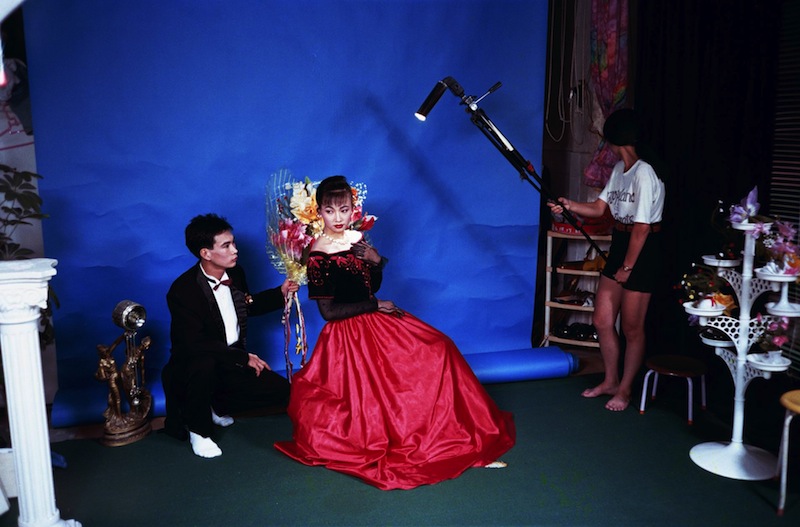
My Bride No.6, 1995,Photo, 60×100cm
Honeymoon
One year later, Zheng Guogu found his true bride, the beautiful young girl Luo La, who was to appear frequently in his works. Honeymoon covers a long period of time. In this work, Zheng Guogu further strengthens the new artistic focus on “scenes from life,” and uses real life as a material in his work. This artistic re-presentation renders the ‘reality’ of these scenes from life questionable. A series of photographs faithfully record the honeymoon of Zheng Guogu and Luo La in Guangzhou. At the same time there is a parallel installation at the Guangzhou venue of Possibilities, an exhibition of contemporary art. Here the ideal “newly-weds,” symbolizing “Zheng Guogu and his bride,”A happy toy couple walk on ground covered with good-fortune stars and colorful flowers. So the work Honeymoon thus consists of two parts that take place simultaneously: the installation in the exhibition space and the scenes of “Zheng Guogu and his bride” on their real honeymoon in Guangzhou.
Honeymoon No.1, 1996, Photo, 60×100 cm
Criminal Life/ Wayward Youth
The wayward and unlawful behaviour of Yangjing youth is a direct source of expressive energy for Zheng Guogu. In fact, Zheng is not in the least interested in probing into the social character of the youth culture. What he focuses on is the fleeting appearance of life created by the media, which exists in the images perceived by the public, but which disappears in a flash. As both a witness and a director, he shot youths indulging in gangsterism and sexual harassment who were molesting a girl and playing around with knives and guns. These violent scenes in The vagarious life of Yangjiang Youth(1996) are continually presented in brilliant colour, which strikes people with a sudden sense of beauty beyond the confused and confusing surface of everyday life. Perhaps the secret of Zheng Guogu’s recent works can only be disclosed through the methods of story-telling. The only connection they have with photography is that he employed a camera to create a narrative image: but if we overlook the camera in his hand, then what will they be? Mini-dramas, written in light on photographic paper?
The Vagarious Life of Yangjiang Youth No.1 , 1996, Photo, 61×100cm
Customers
Ten Thousand Customers dramatically shifts our attention to another key word: customer. This series of works develops a paradoxical theatre of aesthetics and commerce: the artist “produced” 10,000 photos with the same theme of “customers”, but each photo is a unique version. From 1997, at different times, Ten Thousand Customers has undergone numerous changes: from one monochrome to rich technicolour; from simple darkroom production to more complex technological processes; from colour diversity (the colours of each photo differ one-to-another) to the diversity of images (each photo has a TV screen scene as its background). This work has increasingly become Zheng’s “image project that he aspires to but will never complete”, thus:
“Let the platform bear the image of my desire, and beat with the beat of my pulse”.
Ten Thousand Customers is Zheng’s only continuing photographic project. It is still work-in-progress.
Ten thousand customers 34/10000, 2003, Photo, 60×100 cm
One Hundred 10,000 Customers, 2003, Project for the 5th Shenzhen International Public Art Exhibition,Shenzhen
Let’s for a moment review the photographic secrets disclosed in a conversation between Zheng and an anonymous speaker regarding Sunflower Album – Cooked:
Photographs are easy to carry, easy to mail, easy to exhibit, and easy to collect …easy to contact and dispose of at any time … most importantly, photographs are an easy means for us to learn and handle the material of life, and the creative outcome will be clearly evident on the prints of 400-2000 plates. How terrible the capacity of life is (even printing paper play cannot embody). By the play of coincidence, many things combine together – like a dictionary. Nothing can compare with the directness of a 135(35mm) shot.
Please pay attention to these key terms: material of life, capacity of life, coincidence, directness etc.
From the studio-made marriage photo-story My Bride, Zheng Guogu started to transform himself from the earlier youthful fixation with power and consumerism, turned and exposing everything in life in film, and fixing things onto photographic paper. Zheng has finally evolved a unique vocabulary for expressing the dreams and secrets of Southern Chinese youth culture.
The concept that emerged with My Bride marked a turning point for him. While the puppet bride and bridegroom were flying over Tokyo, Zheng also opened the door to “the compressed world”: a world in which sky and land, real people and puppets undergo location transformation and media remixing. From then on, from Media-As Model to World Collection – Digital Video, Zheng reconfigured and rebuilt TV images into what he calls “global media play”. In the years that have followed, “globalization” has finally entered popular vocabulary, and become a determining feature of popular culture. The advent of globalization enabled Zheng to venture into global broadcast, in the form of “Zheng’s Channel”, while living in a small seaside town in China, far away from any acknowledged ‘cultural center’.
Consume is Ideal, To Consume Dispels Despair, 1998, Photo,61×100cm
We can see that the graphic works of Zheng are of larger and larger dimensions, acknowledging fewer and fewer boundaries. Ultimately, this spirit is absorbed on contact with the white media of rice paper and canvas. By such means we enter into Zheng’s painted world.
We find that Zheng always juxtaposes different factors to present an ambiguous and critical art situation. For example, he remixed several unrelated images (a computer; rice paper; a photograph; a knife, etc.) and cooked a meal entitled Chatting to God in the Millennium. Was it a Chinese painting? – nobody knows. People familiar with Yangjiang life will discover that some of the figures which are computer-printed on the rice paper are houses designed by Zheng Guogu and the Yangjiang Youth Design Company, and that the images covering them are all kinds of news, ads, slogans, media straplines and hot stories collected from national newspaper media, especially from Hong Kong:
Beautiful Ancient Costume
What’s the Scale of Your Life’s Adventure?
Am I an Ambitious Queen? (Part 1)
Looking for Creatures Living 500km below Sea Level
Clear colour fonts, computer-printed, together with a traditional Chinese vertical scroll, make the “costumes” look really “beautiful”.
Zheng Guogu’s series paintings Computer Controlled by Pig’s Brain have refracted the overflow and extreme excitement of the media. As one of the most important young artists in China’s consumption time, his unique artistic concept has always been willfully against the consumption reality. In his latest paintings, he draws out the “hormone” from the popular magazines sold in street corners in Hong Kong, and lays it in the synthetic leather, the “disguise” The collision tumed out to be a marvelous artistic effect.
Computer controlled by pig’s brain, 2006, Oil on canvas, 80X80cm
Yes, everything comes from everyday life. But for Zheng, power utility is his power. Nothing is original, and everything takes the form of a fragment or quotation. The mixture of old and new provides the foundation of each consecutive moment. Zheng dissects the seemingly linear history of Chinese painting by means of the computer. In such a historical perspective, we can jump from a seemingly legal channel into another simultaneous channel, e.g. “Zheng’s Channel”, to find the “unofficial history” and narrative methodology that we prefer. Time and space open up instantaneously. It is not difficult to see how the themes of Zheng’s paintings arise directly from TV news images, and that he has then hired somebody to finish them.
For Zheng, painting as painting is of no interest. His painting is a kind of vandalism, intended “to destroy anthropology, and deform the human figure”, and it is also an interesting attempt to “disorganize classic multi-media authority”. The most important message is, “make yourself at home, and help yourself”.
Deep-fried toy tank was well known as Zheng’s most spirited and revolutionary performance. The fried morsel that resulted may have been no less tempting than KFC fried chicken legs. But KFC is a kind of tasty modern relics, and deep-fried toy tank is like a soft penis in the air. There is another historic work that needs finishing by the process of time. The steel Coca-Cola bottle will become a pile of rust after a thousand years, and then break down even further from rust into dust. Behind this work, there is a slogan shouting “No Easy-Carrying! No Virtual Reality! No Political Pop! No Chinese Kitsch! No Adverts! No Hippies!”, which finally builds up an image of adventurous revolutionary youth: Seen my adventure? Welcome to my adventure.
Fried Tank, 1999, Mixed media
But Zheng’s innermost spirit of “revolution” continues to reside in a location that is invisible to contemporary art circles, namely Yangjiang, where Zheng and his friends are purposefully reconstructing residential space. They have established the Shayeya Residence and the Luyi World Bookshop, and Zheng is devoting enormous effort to the creation of his new home.
Below is the dialogue I had with Zheng on the terrace of his home:
HF: The “rockery” is finished now, isn’t it?
ZGG: Yes, almost. Look – it is a fish on this scale. All of this depends on a very good filter system…When I designed the garden, the calligraphy and the garden related directly to each other; when I designed the interior, the garden also related directly to contemporary art.
His home has finally became his museum, and the museum of you and me.
From an image reflecting life to life transformed by design, Yangjiang has become a kind of contested ground – a community full of underground systems and partial struggles. The world is being compressed, like Zheng Guogu’s photos, and in response to this pressured atmosphere, processes for the preservation of life are developing. Within these processes, the artist – as a witness, as a game inventor – is crossing boundaries between art and life, and sythesising them into a new kind of organism.
Parasite architecture, 2001-2003
Software and Hardware of the Place, 2003, Spatial structure for “Canton Express” for “Zone of Emergency” (curated by Hou Hanru), the 50th Venice Biennial
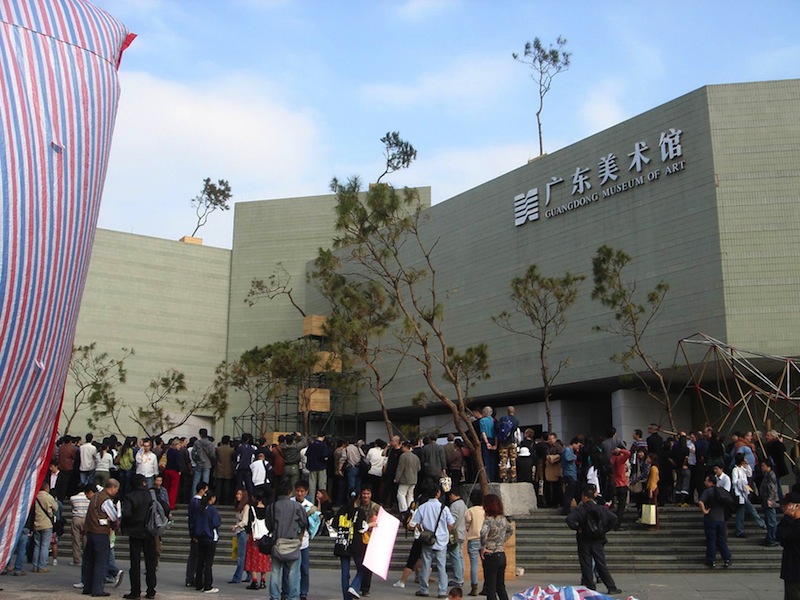
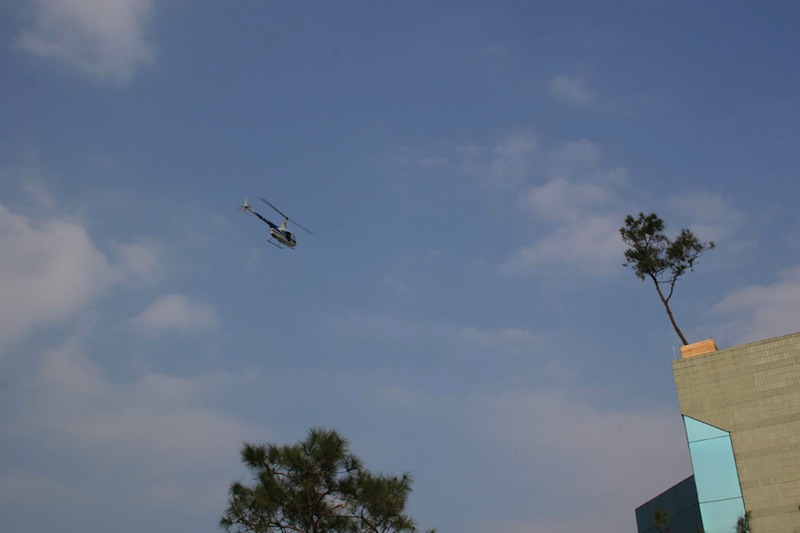 Alternative Shanshui, 2005, Installation, performance, Exhibition view at the 2nd Guangzhou Triennial
Alternative Shanshui, 2005, Installation, performance, Exhibition view at the 2nd Guangzhou Triennial
(All images: Courtesy the artist and Vitamin Creative Space, Text: Vitamin Archive)
[Further reading]
Zheng Guogu: Spirits Linger with Dust
http://www.vitamincreativespace.art/en/?work=zheng-guogu-spirits-linger-with-dust
Zheng Guogu: Jumping out of Three Dimensions, Staying outside Five Elements
http://www.vitamincreativespace.art/en/?book=zheng-guogu-jumping-out-of-three-dimensions-staying-outside-five-elements
Zheng Guogu: Commemorative Plaque 2008: Lehman Brothers Gate
http://www.vitamincreativespace.art/en/?artfair=zheng-guogu-commemorative-plaque-2008-lehman-brothers-gate%EF%BC%8Cart-basel-miami
Zheng Guogu: Three Life Scripts of a Gambler
http://www.vitamincreativespace.art/en/?artfair=art-basel-38
Zheng Guogu: My Home is Your Museum
http://www.vitamincreativespace.art/en/?work=zheng-guogu-my-home-is-your-museum




.jpg)

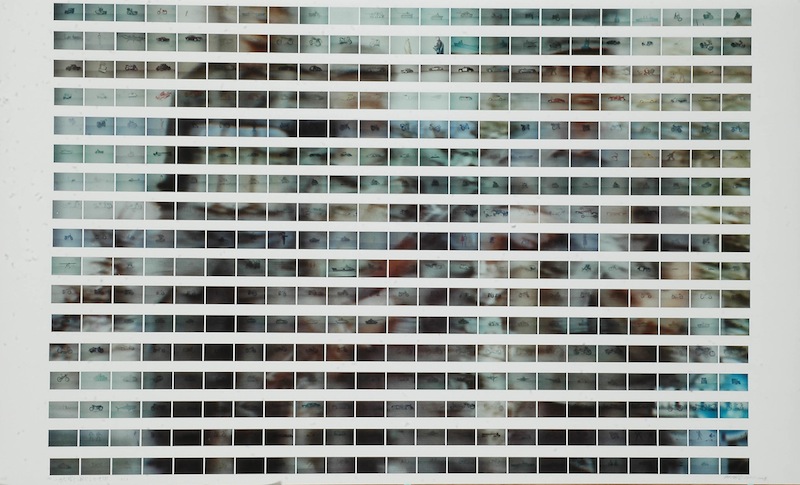
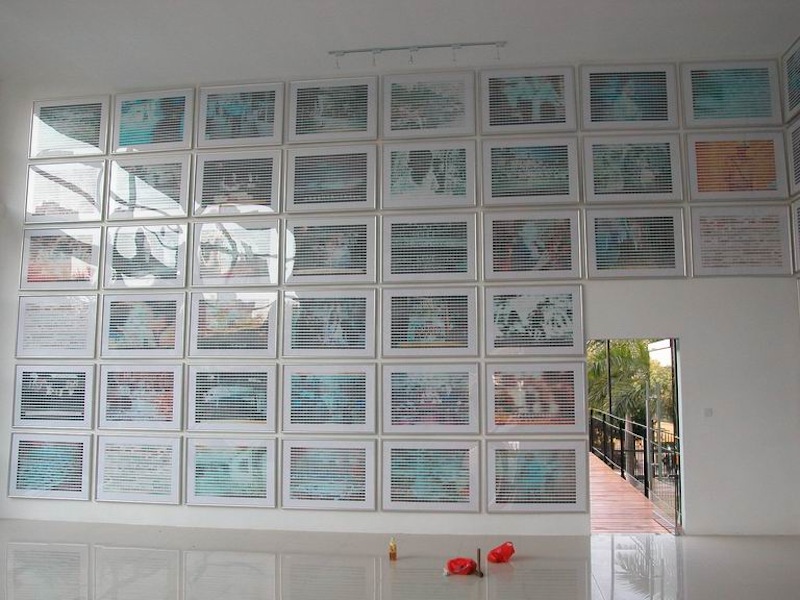
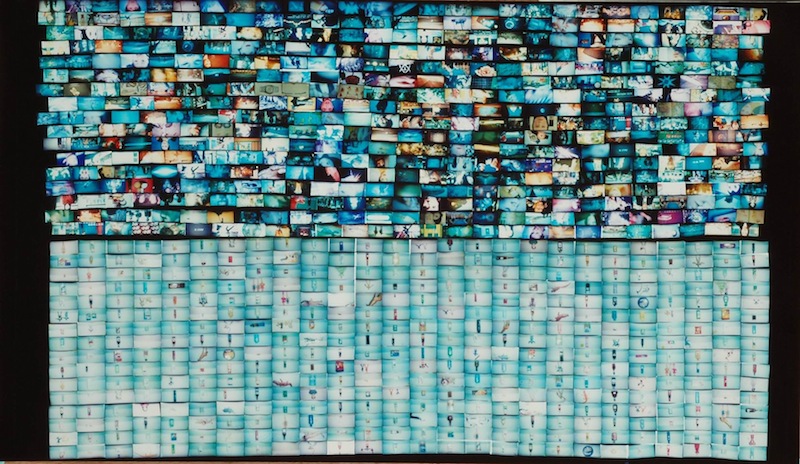
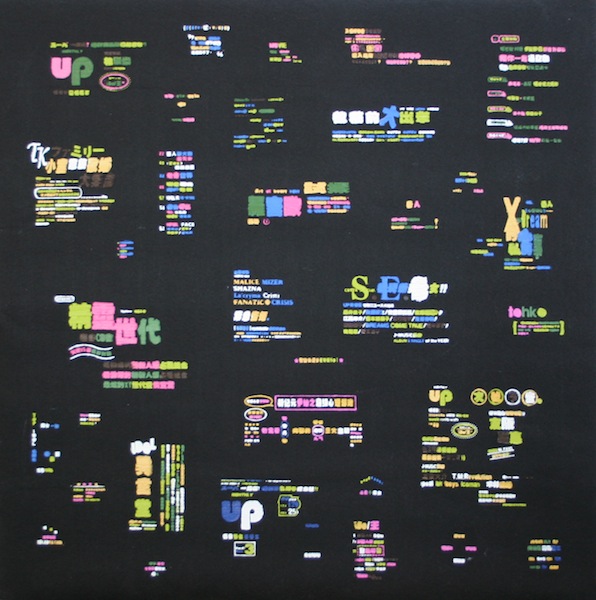
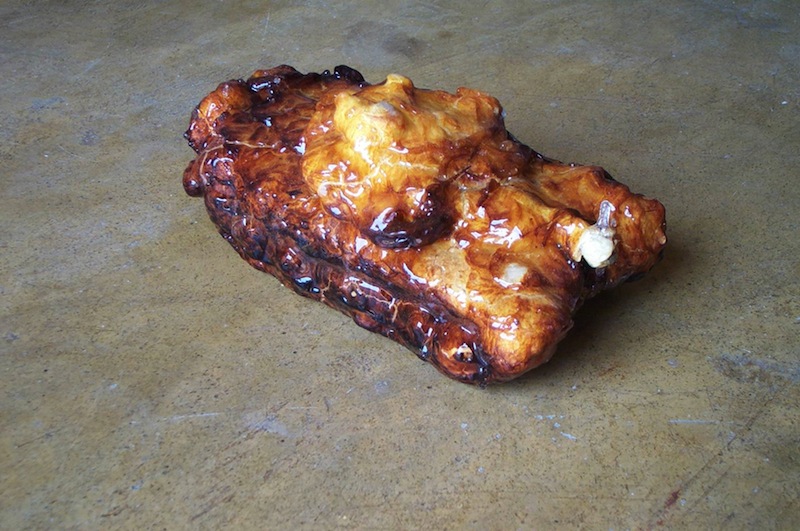
.jpg)
.jpg)


















































































































